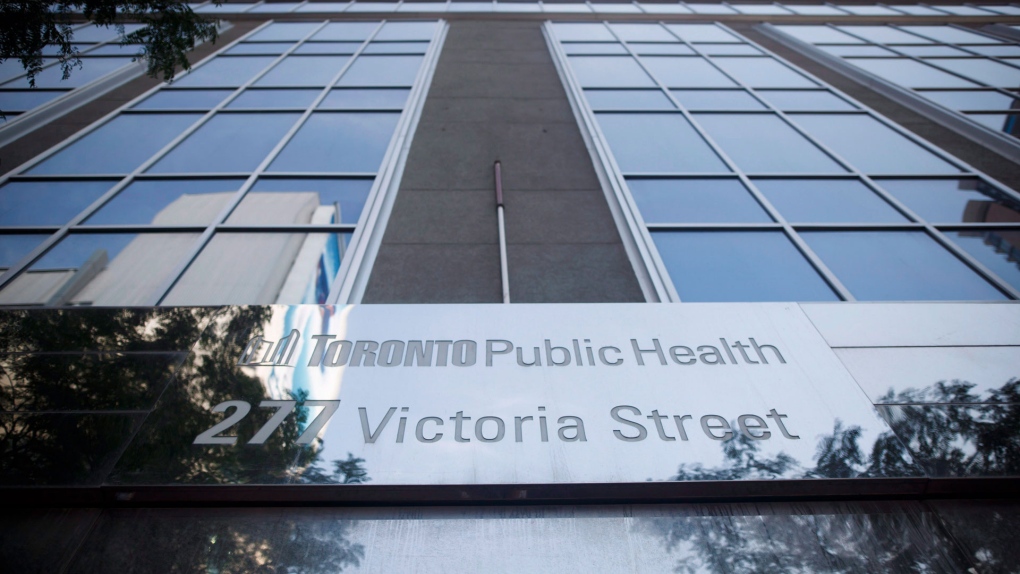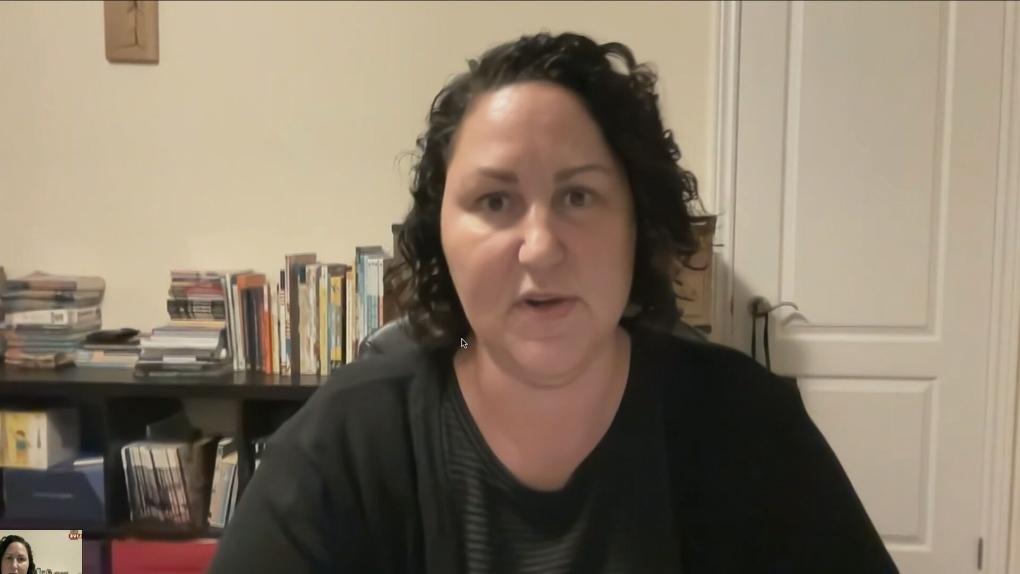Toronto reports third cluster of fatal drug overdoses since late February
 In this Oct. 22, 2018 file photo, a fentanyl user holds a needle in Philadelphia. (David Maialetti/The Philadelphia Inquirer via AP, File)
In this Oct. 22, 2018 file photo, a fentanyl user holds a needle in Philadelphia. (David Maialetti/The Philadelphia Inquirer via AP, File)
Toronto is seeing an increasingly deadly trend as paramedics continue to attend to a higher-than-usual number of suspected drug overdose deaths.
On Wednesday, Toronto Public Health (TPH) reported that between March 23 and 26 seven people are believed to have died of a drug overdose in the city.
Earlier this month, the health unit issued an alert after six people fatally overdosed between March 14 and 17. These deaths are triple the average seen over a four-day period in the last three months.
Another six people died of a suspected drug overdose between Feb. 24 and 27, TPH said.
These suspected drug overdose deaths occurred throughout the city.
And while it is not known exactly what drugs are to blame, public health is saying that the “significantly worsening contamination and unpredictability of the unregulated opioid supply” are key factors.
Toronto Public Health pointed to some of the recent trends it has seen, notably an increase in the contamination of expected fentanyl samples due to high-potency opioids, benzodiazepine-related drugs, and veterinary tranquillizers as well as higher-than-usual concentrations of fentanyl being found in expected fentanyl samples.
It also said that there’s also been a higher presence of nitazene opioids found in samples of unregulated/non-prescribed oxycodone (OxyContin), hydromorphone (Dilaudid), hydrocodone, and Percocet.
Since late 2023, Toronto’s Drug Checking Services, a free and anonymous public health service offered at five harm reduction agencies in the downtown core, has identified three new highly-potent substances in the unregulated street drug supply.
The first, medetomidine/dexmedetomidine, are two long-acting tranquillizers that produce a greater sedation than other similar substances like xylazine, which is also known as “tranq,” “tranq dope,” or “horse tranquilizer.” The effects of these drugs cannot be reversed with the overdose-reversing medication, naloxone, as they are not opioids.
The service has also detected two kinds of nitazene opoids: N-desethyl etonitazene, which is considered to be up to 10 times stronger than fentanyl, and protonitazepyne, which is believed to be more than 20 times stronger than fentanyl. These drugs both require a greater dose of naloxone to reverse their negative effects.

Drug alerts issued with a “lot of intention,” says TPH
During a follow-up interview with CP24.com, Associate Medical Officer of Health Dr. Shovita Padhi said they put in a lot of thought and deliberation before issuing a drug alert.
“When we do put one out, it’s serious. It’s done with a lot of intention,” she said.
Padhi said that this latest alert was issued because the number of suspected overdose deaths recently seen is double the four-day average.
She also said that the suspected fatal overdoses are especially concerning as they happened throughout the city.
“It’s not just a downtown phenomenon,” Padhi said, adding many of those who recently died of a drug overdose were also found in their home.
She also said that TPH was motivated to issue an alert due to the recent discovery of highly-potent nitazene opioids in the unregulated supply, which she said is “especially concerning” to TPH.
“If your body cannot handle that level of opioid, you’re at an extremely high risk of overdosing and dying,” Padhi said, adding the increasingly unpredictability of Toronto's street drugs is also a key factor.
“There’s no way for people who use drugs to control their intake.”
Padhi went on to say that addressing the drug crisis complex and requires a “variety of solutions.”
“We need a public health approach that includes everything from prevention to harm reduction and treatment services across the continuum of care,” she said, adding Toronto is constantly struggling to offer supports to people who use drugs throughout the city.
No end in sight to toxic drug crisis: researcher
Gillian Kolla, a public health researcher whose work focuses on substance abuse, said that this recent spate of suspected overdose deaths in Toronto demonstrates that there's no end in sight to Canada’s ongoing toxic drug crisis.
“We’re going to be continuing to have these clusters of overdose deaths because we’re doing the absolute bare minimum to address ths crisis,” she told CP24.com on Thursday.
“It doesn’t have to be this way. … This is a crisis. We need more support.”
An assistant professor at Memorial University’s Faculty of Medicine, Kolla said that the government, specifically the province, must immediately fund and open more supervised consumption services as well as safer supply programs, among other things, to start getting a handle on this crisis.
The need is so great, she said, that several supervised consumption programs in Ontario have recently had to close their doors or are facing imminent closure due to not enough funding.
According to the Public Health Agency of Canada (PHAC), on average 22 people died every day of a drug overdose between January and September 2023. Eight of those deaths happened daily during that same time frame in Ontario.
The latest PHAC data from 2022 showed that in Ontario a total of 2,531 people died of opioid toxicity. So far, preliminary data from the first nine months of 2023 point to a similar trend.
These numbers are a sharp contrast to those of 2017, where 1,265 drug overdose deaths were recorded in the province.
“The very big danger right now is that we’re going to normalize this very high level of deaths,” said Kolla, who also keeps a close eye on the types of substances that are circulating in the ever-changing unregulated drug supply.
She said the major challenge is the inability to control what’s out there.
“I call it the chocolate chip cookie effect. You never know what you’re going to get. It’s the volatility of the supply that is the issue,” Kolla said, noting the supply has been increasingly unpredictable since 2017 when fentanyl replaced heroin as the most widely used street drug.
“It’s a kitchen sink of different chemicals. … This is happening so far up the supply chain that people have no control of it. Nobody wants to be killing their customers.”

Tips for those who consume unregulated drugs
As always, people who use drugs are advised to not use alone and if they must, have a safety plan in place that includes carrying naloxone and letting someone know before they consume.
The best bet is to buddy up with someone you trust, do small test dose first, and visit a supervised consumption service, if possible.
It’s a good rule of thumb to check your drugs, ideally before using them.
People who use drugs are also encouraged to talk to the person they got them from, if the sample did not contain what was expected, or get their drugs from another source.
CTVNews.ca Top Stories

Here's where Canadians are living abroad: report
A recent report sheds light on Canadians living abroad--estimated at around four million people in 2016—and the public policies that impact them.
'We are declaring our readiness': No decision made yet as Poland declares it's ready to host nuclear weapons
Polish President Andrzej Duda says while no decision has been made around whether Poland will host nuclear weapons as part of an expansion of the NATO alliance’s nuclear sharing program, his country is willing and prepared to do so.
Harvey Weinstein hospitalized after return to New York from upstate prison
Harvey Weinstein’s lawyer said Saturday that the onetime movie mogul has been hospitalized for a battery of tests after his return to New York City following an appeals court ruling nullifying his 2020 rape conviction.
Deadly six-vehicle crash on Highway 400 sparked by road rage incident
One person was killed in a six-vehicle crash on Highway 400 in Innisfil Friday evening.
Invasive and toxic hammerhead worms make themselves at home in Ontario
Ontario is now home to an invasive and toxic worm species that can grow up to three feet long and can be dangerous to small animals and pets.
Central Alberta queer groups react to request from Red Deer-South to reinstate Jennifer Johnson to UCP caucus
A number of LGBQT+2s groups in Central Alberta are pushing back against a request from the Red Deer South UCP constituency to reinstate MLA Jennifer Johnson into the UCP caucus.
Opinion I just don't get Taylor Swift
It's one thing to say you like Taylor Swift and her music, but don't blame CNN's AJ Willingham's when she says she just 'doesn't get' the global phenomenon.
Sophie Gregoire Trudeau on navigating post-political life, co-parenting and freedom
Sophie Gregoire Trudeau says there is 'still so much love' between her and Prime Minister Justin Trudeau, as they navigate their post-separation relationship co-parenting their three children.
First court appearance for boy and girl charged in death of Halifax 16-year-old
A girl and a boy, both 14 years old, made their first appearance today in a Halifax courtroom, where they each face a second-degree murder charge in the stabbing death of a 16-year-old high school student.






























